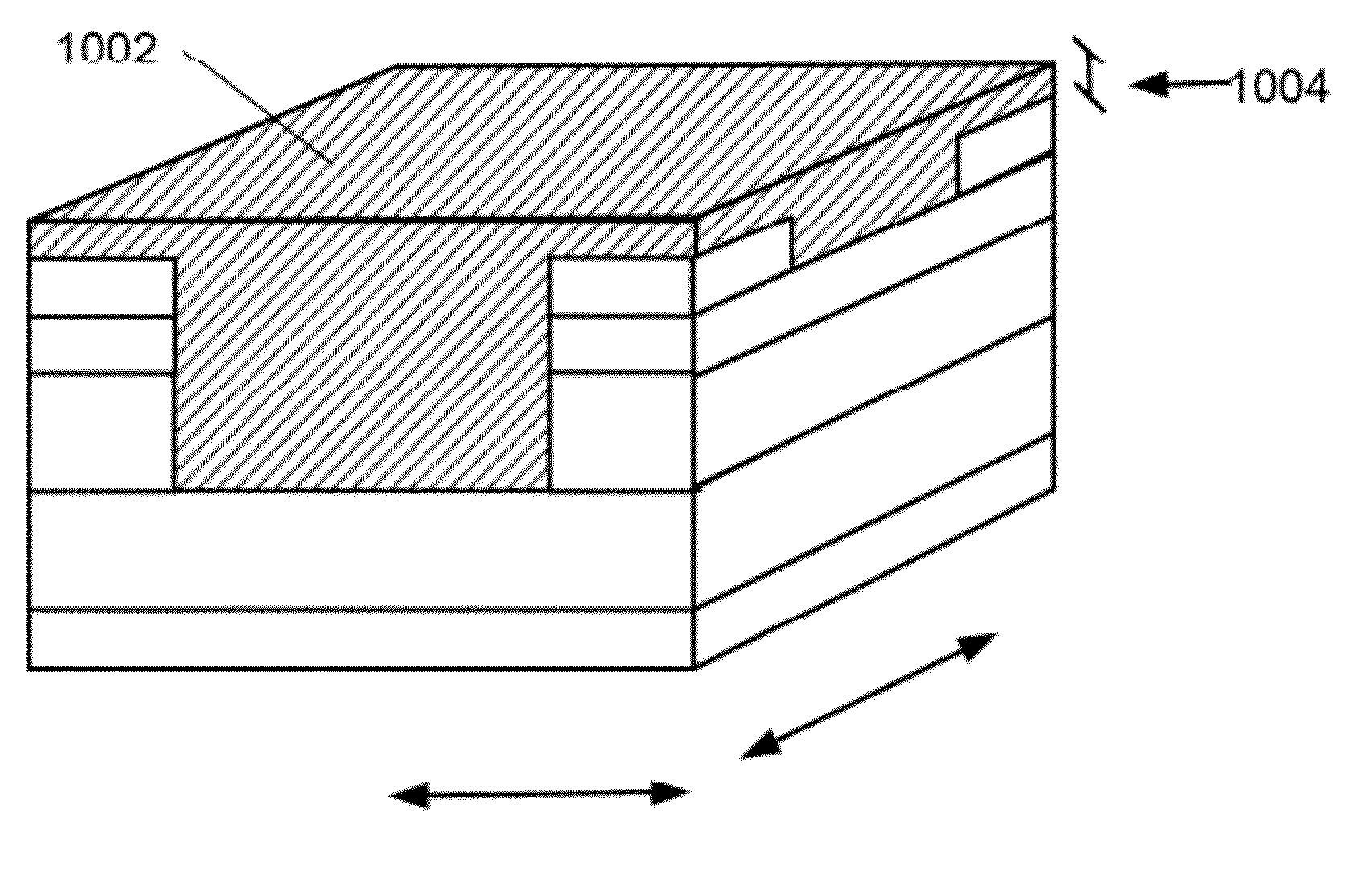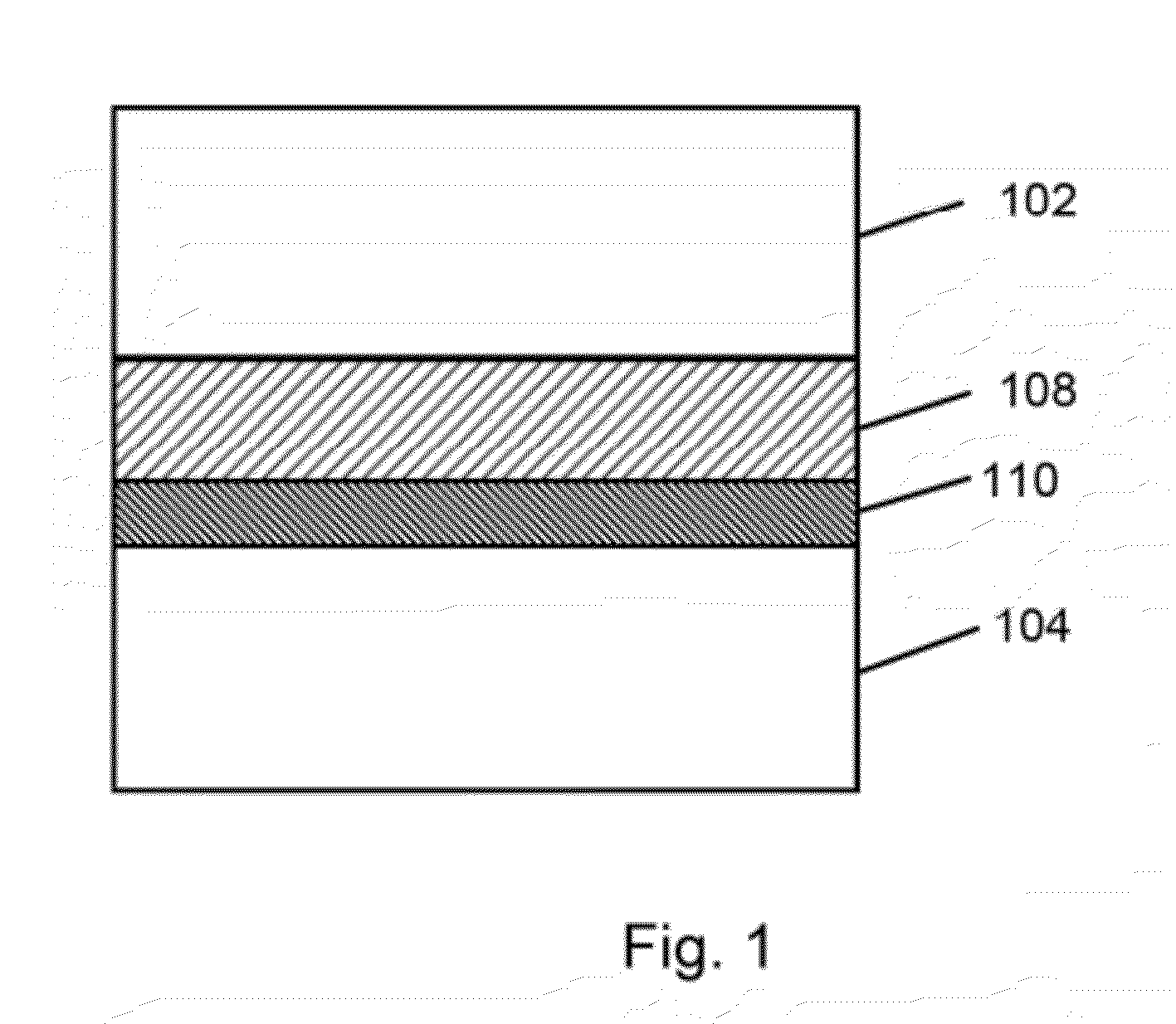Disturb-resistant non-volatile memory device and method
a non-volatile memory and resistive technology, applied in the direction of bulk negative resistance effect devices, semiconductor devices, electrical equipment, etc., can solve the problems of increasing power dissipation, non-scaling of sub-threshold slopes, and reducing device performan
- Summary
- Abstract
- Description
- Claims
- Application Information
AI Technical Summary
Problems solved by technology
Method used
Image
Examples
Embodiment Construction
[0015]The present invention is generally related to switching devices. More particularly, embodiments according to the present invention provide a method and a structure to form an array of switching devices. The present invention has be applied to forming a disturb resistant non-volatile memory device using an amorphous silicon switching material. But it should be recognized that embodiments of the present invention can be applied to other devices.
[0016]FIG. 1 is a simplified diagram illustrating a cross section of a resistive switching device 100. The resistive switching device includes a top wiring structure 102, a bottom wiring structure 104 and a switching element 108 disposed between the top wiring structure and the bottom wiring structure. The top electrode and the bottom electrode are arranged orthogonal to each other in a crossbar to form a highly interconnected structure. In this implementation, the top wiring structure and the bottom wiring structure can have a portion in...
PUM
| Property | Measurement | Unit |
|---|---|---|
| sizes | aaaaa | aaaaa |
| size | aaaaa | aaaaa |
| angle | aaaaa | aaaaa |
Abstract
Description
Claims
Application Information
 Login to View More
Login to View More - R&D
- Intellectual Property
- Life Sciences
- Materials
- Tech Scout
- Unparalleled Data Quality
- Higher Quality Content
- 60% Fewer Hallucinations
Browse by: Latest US Patents, China's latest patents, Technical Efficacy Thesaurus, Application Domain, Technology Topic, Popular Technical Reports.
© 2025 PatSnap. All rights reserved.Legal|Privacy policy|Modern Slavery Act Transparency Statement|Sitemap|About US| Contact US: help@patsnap.com



